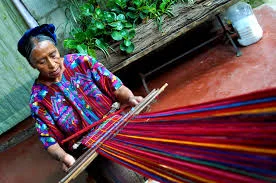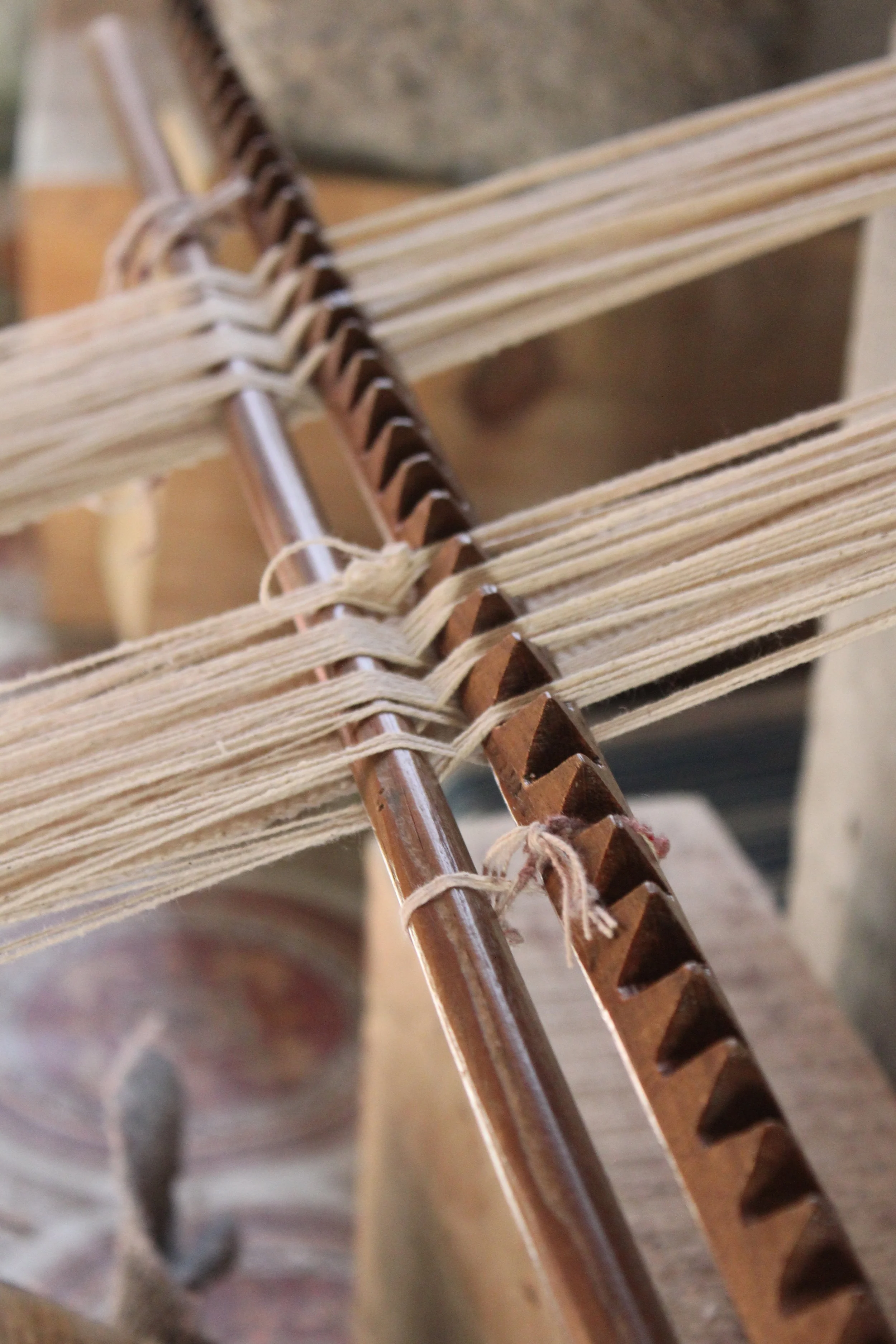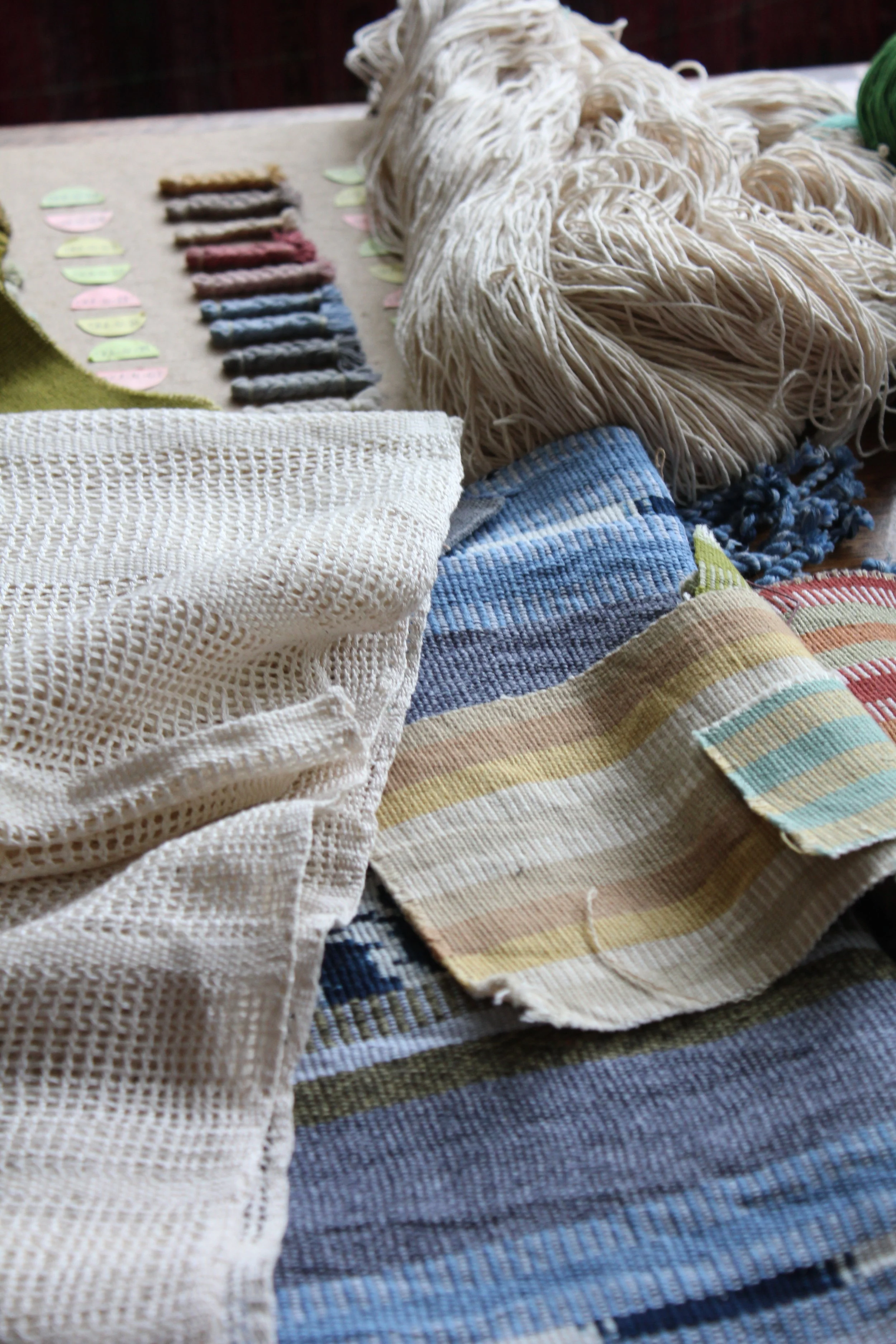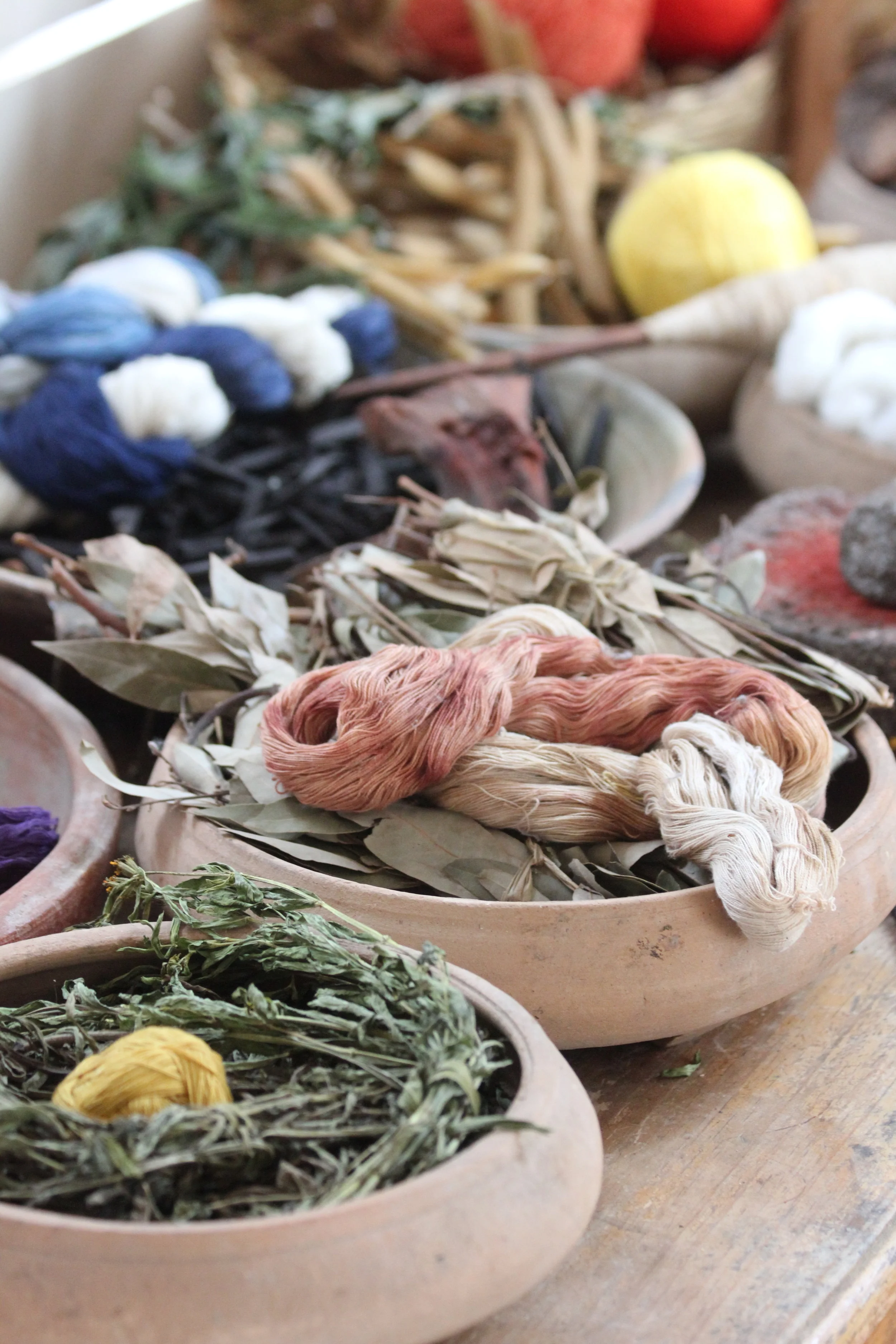Ghanaian Kente cloth: Vibrant woven strips meticulously planned and sewn together at the ends.
WEAVING an art & a livelihood
The Story: Weaving is an amazing craft which utilizes beautiful wooden tools: looms, shuttles, frames and more. These tools are works of art in and of themselves, and even more incredible is the fact that they have been around since the same time our ancestors were developing stone tools- around 10,200 BC. Although weaving is a traditional craft, which was developed alongside ceramics, woodworking, stone and metalwork, most people in the United States of America are unfamiliar with a loom or the textile creation process. Growing up in Virginia, it has been my personal experience that handcrafted textiles seem to be undervalued and under-appreciated by the majority. One reason for this may be their link to domesticity and traditional women’s work. Another reason is the development of mechanical and eventually industrial looms, which can produce massive quantities of fabric in short periods of time.
From teepees to yurts, socks to rugs, wedding veils to curtains, and hand towels to yoga blankets, textiles surround us and continue to be a necessity of everyday life just like housing, food, and water. One of the first objects we come in contact with when we are born is a blanket or gauze that we are wrapped in. Of course not all of these things need to be hand-woven or handmade. There is definitely a great deal of benefit in utilizing industry for the production of some, but that makes the material that is hand-woven all the more beautiful, artful and sustainable.
Exquisite handwoven Italian tapestries that you see at all the art museums. Created by hundreds of people but made by hands nonetheless!
More? Looking at traditional textiles throughout the world is also a way to aesthetically define culture, geography, and social structure. The examples here do not even begin to scratch the surface of the multitude of weaving traditions and techniques. Textiles are made with different patterns, colors, textures and densities for all different purposes. And, if you haven’t already gathered this, weaving is an extremely long repetitive process which requires a great deal of patience, and focused attention. One slip up can mean hours of time undoing and fixing!
Guatemala- This woman is working on a back strap loom, an ingenious invention that allows weaving to be done almost anywhere without lugging around a big cumbersome floor loom. This is how Living Threads’ natural dye blankets are made!
When I think about hand-woven textiles I think about source and resource. If we are concerned with how we are growing crops, how we are treating animals, what is going into the cleaning products we use, should we not also be concerned with the clothes on our back, the blankets and pillows we curl up with at night, the rugs under our feet? How they are made and who made them. Do those who make what we purchase have enough to eat? And if the answer to that last question is no, how can we make better decisions as consumers to support the livelihoods of all of those in our human family? How can we begin to make changes to a larger un-sustainable and inequitable system? What role does Living Threads Co. play? What can you do?







